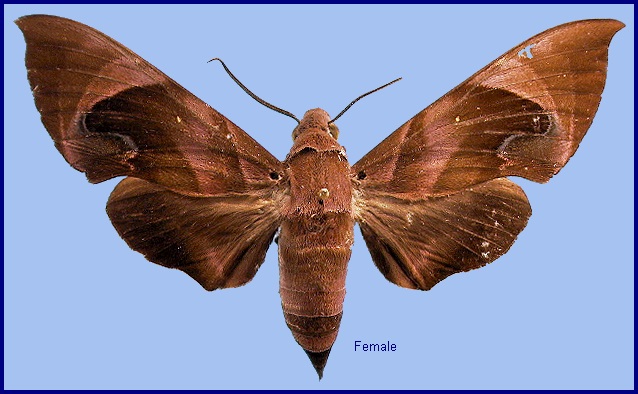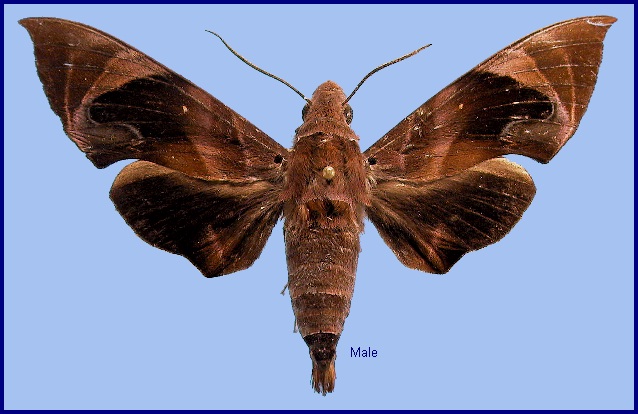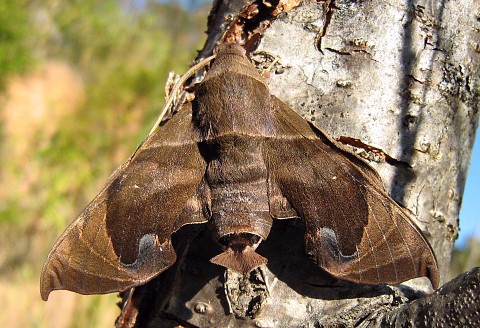

Darapsa bhaga Moore, [1866], Proc. zool. Soc. Lond. 1865: 794. Type locality: [India,] Northeast Bengal.
Synonym. Darapsa bhaga Moore, [1866].
Wingspan: 82--84mm. Superficially similar to species of Daphnis, particularly Daphnis hypothous hypothous and Daphnis layardii, but easily distinguished by the falcate apex of the forewing, which also lacks a large oval dark green basal patch on the upperside. Similar to Eurypteryx obtruncata but forewing outer margin less curved and hindwing apex evenly rounded. Easily distinguished from other species of Eurypteryx, except Eurypteryx obtruncata, by the incomplete line on forewing upperside from costa towards middle of outer margin dividing light brown apical area from deep brown discal area; antemedian band with a pale basal edge. Hindwing upperside almost uniformly dark brown with a lighter patch at tornus. Forewing underside with two distinct median lines.


China: 11.iv (Yunnan); 3.v (Yunnan); 19-23.vii (Yunnan).
July in northern Thailand at 1400m altitude.
OVUM: Unrecorded.
LARVA: Whilst still feeding the full-grown larva of this species is predominantly green, with the amount of white speckling varying to some degree. Just prior to pupation all green colour changes to purple-brown.

PUPA:

Larval hostplants. Alstonia (Apocynaceae). Robinson et al. (2001) give Alstonia scholaris, as do Eitschberger & Ihle (2014) for Thailand. In Guangxi, China, larvae have been found on Alstonia rostrata C. E. C. Fisch. (Xu ZhenBang, pers. comm. 2023).
Unknown.
China: Shaanxi (Taibai Shan); Yunnan (Xishuangbanna, Mengla County, 950m; Pu'er, 820m; Ma'andi, Jinping County, 1020m); Guangxi (Fangchenggang, Shiwandashan National Nature Reserve, 300m); Guangdong (Shenzhen); Hainan (Diaoluoshan National Forest Park; Zhiqing Forest).
Nepal, Bhutan (Irungbam & Irungbam, 2019), northeastern India, southwestern to central China, Thailand, Malaysia (Peninsular, Sarawak), Indonesia (Sumatra, Java, Kalimantan).

 Return to Sphingidae of the Eastern Palaearctic species list
Return to Sphingidae of the Eastern Palaearctic species list